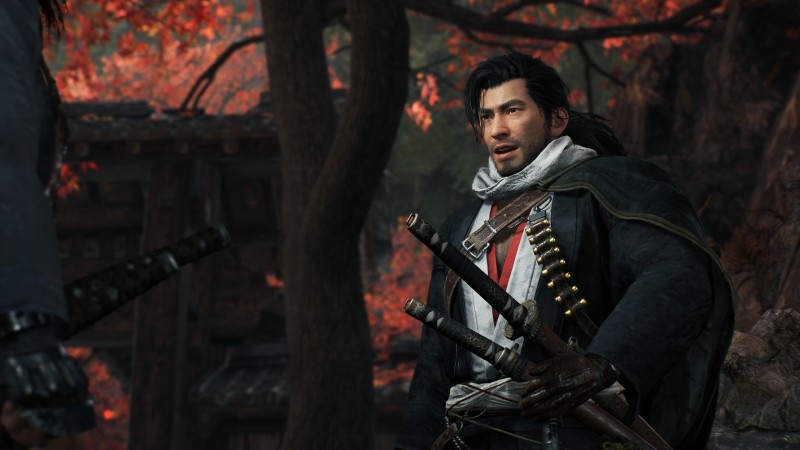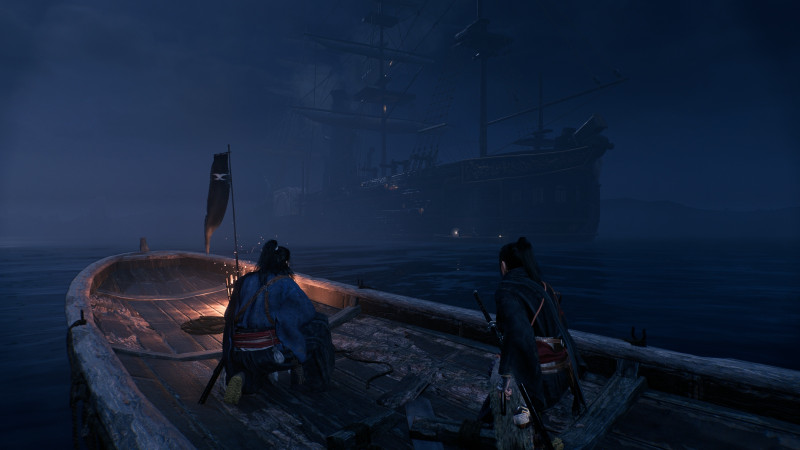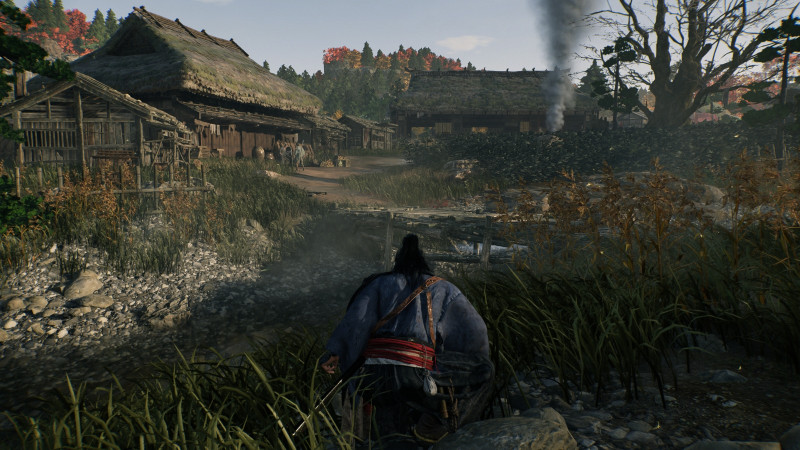Using lasers and a holographic two-photon microscope that can peer deep into the brain, scientists have identified and…
Artificial intelligence can predict events in people’s lives – Technology Org
Artificial intelligence developed to model written language can be utilized to predict events in people’s lives. A research…
How Trusted Are Online Casinos in Pennsylvania? The Importance of Cybersecurity in the Gambling Industry – Technology Org
Pennsylvania has a growing online casino and gambling industry. While it’s growing, one of the biggest concerns potential…
From CO2 to green chemicals—researchers are one step closer – Technology Org
An international research team at DTU has increased the shelf life of electrolyzers that convert CO2 from half…
VR users need an emotional connection to virtual worlds, not better graphics – study finds – Technology Org
Being wowed by powerful graphics is not enough for a person to feel fully immersed in a virtual-reality…
For this emergent class of materials, ‘solutions are the problem’ – Technology Org
Rice University materials scientists developed a fast, low-cost, scalable method to make covalent organic frameworks (COFs), a class of…
Electronic pathways may enhance collective atomic vibrations’ magnetism – Technology Org
Materials with enhanced thermal conductivity are critical for developing advanced devices to support communications, clean energy and aerospace applications….
AI generates proteins with exceptional binding strengths – Technology Org
A new study in Nature reports an AI-driven advance in biotechnology with implications for drug development, disease detection,…
Rise of the Rōnin Preview – Team Ninja Discusses Crafting Its First Open World Where You Shouldn’t Kill Everything On Sight – Game Informer
A Rōnin is a samurai without a master. Unshackled from bonds, these wandering swordsmen are free to carve their own path, and that freedom forms the foundation of Rise of the Ronin. The adventure is Wo Long: Fallen Dynasty and Nioh developer Team Ninja’s first choice-driven, open-world action game. We recently got another peek at the title during The Game Awards, and we spoke to the game’s lead designers to get some insight and context as to what the adventure entails.
Set in 1863, Japan, players control a nameless Rōnin acting as a kind of work-for-hire warrior called a Veiled Edge. The game unfolds in the middle of what’s known as the “Bakumatsu” period. A decade prior, Japan’s centuries of isolation came to an end thanks to the arrival of the American “black ships” led by Commander Matthew C. Perry, kicking off the nation’s years-long transformation from its militaristic Tokugawa Shogunate government to the modernized empire brought about by the Meiji Restoration. Game director Fumihiko Yasuda tells us this collision of East and West and the resulting political and societal chaos was “the most exciting and eventful handful of years” of Japan’s history.
“Nioh was set in what’s called the Sengoku period, or which is sort of the Warring States period, where there were samurai who fought in the very traditional style,” says producer Yosuke Hayashi. “But we wanted this new Bakumatsu, which is sort of the end of the Edo era, …it’s a lot more modern, so we thought it allows for a unique setting when we were thinking about creating a fiction story inspired by a certain moment in time. It allowed for a very unique setting for us.”

Unlike the fantastical Nioh and Wo Long, Rise of the Rōnin shuns those supernatural elements in favor of telling a more grounded historical drama. Yasuda believes this is necessary for players to fully immerse themselves into the story and setting. Expect to encounter several real-life figures of the era, such as Sakamoto Ryōma and Yoshida Shōin. Though the narrative weaves in real-life events, it’s a fictional tale that players have the freedom to mold thanks to the inclusion of choices.
In another first for a Team Ninja action game, Rise of the Rōnin features decision-making that steers the adventure as players see fit. Conversations feature multiple responses, and key story moments present options such as choosing whether to kill or spare an assassination target.
Don’t expect a large number of these branches to present themselves during the main story, but completing certain side missions related to the main narrative or centering on an important character will help steer the overall adventure toward one of several endings. These include Bond Missions, which involve helping specific characters to improve your relationship with them.

Yasuda states the concept of bonds is a central theme of Rise of the Rōnin. “So you have a lot of characters that you meet throughout the story that you can develop bonds with,” Yasuda explains. “And a lot of side quests are also tied to these historical figures. And they’re also the system of forming bonds with lands and different locations. So, by helping out people in certain lands, you can deepen your bond with them. A lot of motivation for exploring the world is centered around these systems of bonds with characters and locations.”
The Rōnin himself symbolizes this freedom. Team Ninja describes him as a fully realized character with a fleshed-out backstory, but making decisions allows players to decide how he’s depicted in the story. The studio wouldn’t divulge much more into his personality or ultimate goal, but players will have plenty of time to get to know him while roaming Rise of the Rōnin’s freely explorable Japan.
Hayashi says Rise of the Rōnin’s open world presented a welcomed challenge for the studio traditionally known for creating linear levels or, at most, large hubs. “Something we’ve always wanted to sort of do was to create an open-world title,” says Hayashi. “I think that was sort of a natural next step for us.”
Humorously, Yasuda adds that Team Ninja is so accustomed to designing games where players kill anything that moves that crafting an experience with less expendable background characters, such as civilians, has been “impactful” and “a challenge.”

The game features three major cities of the era: Yokohama, Kyoto, and Edo (known today as Tokyo). Yasuda states that the countryside and rural areas between these cities are ravaged by bandits and other threats, along with copious side missions, but doesn’t reveal much more than that. In terms of transportation, trailers have shown players riding on horseback as well as deploying a bird-shaped glider to quickly soar across a city. Players also have a grappling hook used to quickly ascend vertical spaces and fly into the air, which can be used in tandem with the glider to commit aerial assassinations.
Yasuda describes Rise of the Rōnin’s close-quarters swordplay as having familiar elements to games like Nioh. The game includes different weapon styles, parrying appears to be an important skill, and players can employ tricks like setting their katana on fire to deal extra damage. However, Rōnin were known for using a variety of weapons, and that’s represented by polearms and the most devastating weapon granted by the time period: guns. The influx of Western firearms, such as pistols and rifles, adds a vital ranged element to the action. The grappling hook can also be used offensively; a recent trailer showed the Rōnin hooking it to an explosive barrel to swing and lob at a mob of targets. The story may be more reality-based, but the action is as over-the-top as you’d expect from a Team Ninja title.
Team Ninja states Rise of the Rōnin’s combat revolves around studying and learning enemy patterns gleaned after repeated failures, suggesting it will be as challenging as the games preceding it. When I asked if it still punishes death in the same Soulslike fashion, where players must retrieve fallen experience points, and how the more realistic story would justify this, Yasuda confirmed it does and involves a progression resource called Karma. It’s an apt name; the developers say the word symbolizes the destiny people carry from one life into the next. However, Yasuda clarifies that Karma only represents one system. There is another, more traditional type of XP that players retain after death. “You can look forward to the details of this in the future,” Yasuda says.
Rise of the Rōnin is an exciting challenge for Team Ninja. While the team is known for action first and foremost, it’s eager to spread its wings into the open-world genre and is committed to telling a story that feels authentic to the era it depicts. “We’re hoping that players can really feel like they’ve traveled to this important era in Japanese history and enjoy that experience,” says producer Yosuke Hayashi. We’re hoping for the same when the game arrives on March 22.
Navy officer deepens her engineering and leadership skills at MIT

Trained to be a leader even as a child, U.S. Navy Lieutenant Asia Allison is acquiring a new level of expertise as a graduate student at MIT — and a new approach to technical leadership in the Daniel J. Riccio Graduate Engineering Leadership (GradEL) program.
“The Navy has a need for engineering leaders,” Allison says. “The critical-thinking skills that I am developing in GradEL will be very helpful in the workforce as we tackle a myriad of challenges and bring new ideas to the Navy.”
Allison was born in Norfolk, Virginia. Her father is also in the Navy, and the family moved every few years. Already at age 4, she was given her “first opportunity to lead,” she says, when her first sibling was born, and her mother made it clear that Allison, as the oldest child, would “set the standard.”
“My mom was laying down the foundation for me, showing me what it truly meant to lead by example,” she says.
While studying mathematics at Spelman College, which Allison paid for by joining the Naval Reserve Officer Training Corps (NROTC), she became a battalion operations officer, responsible for giving direction to about 20 other NROTC students. And in her first tour of duty right out of college, Allison led a division of sailors — while she was learning what their duties entailed.
“I began by shadowing my sailors so that I could learn their skillset and be able to advocate for them as their leader,” she says.
In 2020, Allison had an experience that shook the foundations of her career and perhaps allowed her to build something stronger and more balanced.
“Failing my Prospective Nuclear Engineering Officer course was a pivotal moment in my life,” Allison says. “It meant I would have to reevaluate my career. It was also the first time I really failed at something.”
The experience was crushing to her at first, but in time, it would bring Allison to a world-renowned engineering program and a process of self-discovery at MIT.
Allison realized that she had grown passionate about engineering during the time she had spent in the Navy’s nuclear program. She switched “communities” to engineering duty officer in July 2020 and applied to the graduate program in naval construction and engineering at MIT in September of that year. In summer 2021, she began a three-year program to earn a naval engineer degree and a master’s degree in mechanical engineering.
In spring 2023, Allison was selected to participate in GradEL, a program that aims to cultivate leaders of exceptional skill and character who can inspire teams and drive technical efforts that change the world for the better. A main aspect of the program puts participants through an extensive process of self-reflection, with the underlying idea that good leaders need to know themselves first — in effect, they must learn how to manage themselves before attempting to manage others.
It was in GradEL that Allison developed a deeper understanding of her own background and profile as a leader. She identified strengths that dated back to her early childhood and areas where she would benefit by changing her perspective.
Reflecting on failure, she says that since having taken a GradEL class that focuses heavily on self-discovery, she knows she was previously “in more of a fixed mindset. I was choosing to look at my mistake as an absolute rather than as an opportunity to improve.”
Allison says the self-reflection aspect of the GradEL program has provided her with clarity. “It helps to know where you want to go based on where you have been.”
Industry leaders who spoke to the GradEL students about the challenges faced in their careers were also very helpful to Allison. “Hearing how the guest speakers overcame those challenges is something that I plan to apply in my career,” she says.
Her graduate studies in engineering are culminating in a master’s thesis project involving the design of a refueling infrastructure for an offshore nuclear electricity-generation platform.
“I really liked the concept with my prior nuclear engineering experience, as well as having taken a sustainability course here at MIT. I found the idea of investing in an alternate source of electricity generation to be worth exploring,” she says.
Bolstered with advanced engineering and leadership training, Allison still leans on the early lessons provided by her mother.
“I hold dearly to the lessons she taught me,” Allison says, “and continue to push myself with her as my motivation and my ‘North Star.’”
